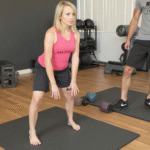Ever wake up feeling like your body’s stuck in slow motion? Maybe your knees creak when you stand, or your shoulders tense up after hours at a desk. I’ve been there too—aching, stiff, and frustrated. But what if you could move freely again, like your joints were designed to glide? That’s where active movement practices come in. They’re not just exercises; they’re a way to reconnect with your body’s natural rhythm.
Think of your muscles and connective tissues as a network of elastic bands. When they’re tight or unbalanced, everyday motions—like reaching for a shelf or bending to tie your shoes—become harder. Techniques like controlled fluid motions and targeted tissue care can help restore that lost ease. Imagine loosening stubborn knots in your calves or unlocking tension in your hips, one intentional stretch at a time.
This isn’t about pushing through pain. It’s about working with your body to build resilience. By blending gentle yoga-inspired postures with science-backed training, you’ll improve how your joints absorb stress. You’ll also learn how proper alignment protects your lower back and knees during workouts. Ready to move better, feel stronger, and say goodbye to nagging discomfort? Let’s dive in.
Key Takeaways
- Active movement practices enhance joint flexibility and reduce daily stiffness.
- Combining yoga-inspired techniques with targeted exercises improves muscle balance.
- Proper alignment during stretches safeguards against injuries.
- Fluid motions help release tension in calves, hips, and shoulders.
- Regular practice supports long-term joint health and pain reduction.
Understanding the Fascial System and Joint Health
Imagine a biological suit that supports every move you make—thin, stretchy, and always adapting. This is your fascial system, a web-like layer wrapping muscles, bones, and organs. It’s the unsung hero behind your ability to twist, bend, and stand tall. Without it, your body would lack the structure to absorb impact or maintain posture during daily tasks.
What Is Fascia and Its Role in Movement
Fascia is a thin, fibrous tissue connecting every part of your body. Think of it as a 3D network linking your calf muscles to your shoulders, ensuring coordinated motion. When healthy, it glides smoothly, letting joints move freely. But when dehydrated or tight—common after long hours sitting—it can limit your range of motion and create stiffness.
How Fascial Health Impacts Daily Activities
Ever struggle to tie your shoes or reach overhead? Tight fascia might be the culprit. Sedentary habits shorten these tissues, making simple actions like walking or lifting groceries feel taxing. Regular movement acts like oil for this system, keeping it supple. Light exercises, like gentle twists or arm circles, hydrate fascia and reduce muscle strain over time.
Mastering dynamic stretching, mobility drills, yoga fusion, fascia release Techniques
What if your daily routine could feel as smooth as a well-oiled machine? The secret lies in understanding how different movement strategies work together. By focusing on core principles, you’ll build a foundation that supports every bend, twist, and stride.
Three Pillars of Effective Movement
Active warm-ups prepare your body by gradually increasing blood flow. Think leg swings or arm circles—movements that mimic activities you’ll do later. These practices improve range of motion while reducing injury risks during workouts.
Strength-focused drills target stability around key areas like knees and shoulders. For example, single-leg balances challenge your muscles to work as a team. This builds resilience against strains during sudden motions or heavy lifts.
Mindful cooldowns blend breath control with gentle poses. Inhale as you reach upward, exhale while folding forward. This combo eases tension in your back and calms your nervous system after intense sessions.
| Principle | Application | Key Benefit |
|---|---|---|
| Controlled Motion | Arm circles before lifting | Prevents shoulder strain |
| Muscle Engagement | Plank variations | Strengthens core stability |
| Breath Syncing | Sun salutation flows | Reduces exercise-related stress |
Notice how these methods complement each other? Morning routines might start with cat-cow stretches to awaken the spine. Evening sessions could focus on hip-opening poses to release built-up tension. Listen to your body’s signals—discomfort means ease up, not push harder.
Ready for specifics? The next sections break down step-by-step drills you can mix into any schedule. Whether you’re desk-bound or training for a marathon, these adaptable techniques meet you where you are.
Effective Mobility Drills for Flexibility and Injury Prevention
Tight calves or stiff ankles slowing you down? Targeted movements can unlock your lower body’s potential while shielding joints from strain. Let’s explore practical routines that build resilience where it matters most.
Calf and Foot Stretching Methods
Start with a wall calf stretch. Place both hands on a wall at shoulder height. Step one foot back, keeping the heel flat. Lean forward until you feel tension in your calf—hold 60 seconds per leg. This combats stiffness from prolonged sitting or running.
For foot tension relief, try the towel scrunch. Sit barefoot with a towel under your toes. Grip the fabric by curling your toes, then release. Repeat 15 times to strengthen arches and ease pain linked to plantar fasciitis.
Side Angle and Quad Stretch Techniques
Side angle stretches open tight hips. Stand with feet wide, right toes pointing out. Bend your right knee and lower your right hand to the floor (or a block). Extend your left arm overhead, forming a straight line from heel to fingertips. Hold 45 seconds per side.
Quad stretches protect knee health. While standing, grab your ankle and gently pull it toward your glutes. Keep your torso upright and knees aligned. Add a slight hip flexor stretch by tilting your pelvis forward. Maintain for 1 minute per leg.
- Progress safely: Start with 30-second holds, increasing duration weekly
- Pair stretches with light cardio (e.g., brisk walking) for better blood flow
- Stop immediately if sharp pain occurs—discomfort should feel manageable
Integrating Yoga Fusion for Enhanced Body Movement
What if your workout could also calm your mind? Combining deliberate poses with breath control creates a powerful tool for releasing tension in your body. This approach helps you move with intention, addressing tightness in your muscles and connective tissues while boosting mental clarity.

Yoga Poses That Target Tension Zones
Downward-Facing Dog isn’t just for hamstrings. Press palms firmly into the floor, lift hips upward, and let your head relax. This pose stretches your calves, shoulders, and spine simultaneously. Hold for 60-90 seconds to encourage your system to unwind.
Camel Pose opens the front body. Kneel with knees hip-width apart, then arch backward while reaching for your heels. Breathe deeply as this position lengthens tight hip flexors and improves flexibility in your upper back.
- Transition smoothly between poses to avoid strain
- Use props like blocks for support in Extended Side Angle Pose
- Focus on alignment: Keep knees over ankles during lunges
Breathwork’s Hidden Superpower
Slow inhales through the nose activate your parasympathetic nervous system. Try this during seated twists: Inhale to sit tall, exhale to rotate deeper. One yoga instructor notes:
“Breath awareness turns simple exercises into mindfulness practices.”
Pairing movement with rhythmic breathing reduces pain perception by up to 40% in some studies. It also helps you notice subtle shifts in your range motion, letting you adjust poses before discomfort arises.
Daily Strategies for Joint Health and Mobility Training
Your joints work hard daily—supporting your steps, lifts, and twists. Let’s keep them happy. Simple habits can protect these critical connections while easing discomfort. Here’s how to build resilience without overhauling your routine.
Incorporating Foam Rolling and Heat/Cold Therapy
Foam rolling acts like a massage for your muscle fibers. Glide it along tight areas like calves or thighs for 2-3 minutes daily. This practice hydrates fascia, the connective tissue, improving elasticity and reducing stiffness.
Heat therapy relaxes muscles after workouts. Try a warm bath or heating pad for 15 minutes. Cold therapy, like ice packs, soothes inflammation. One physical therapist advises:
“Alternate heat and cold for stubborn pain—10 minutes each—to boost recovery.”
Posture, Professional Guidance, and Lifestyle Tips
Slouching strains your body. Sit with knees below hips and shoulders relaxed. For desk workers, set reminders to adjust your position hourly.
- Consult a therapist for personalized exercise plans
- Do 5-minute stretching breaks during busy days
- Wear supportive shoes to protect your foot arches
Small changes add up. Even a 3-minute yoga-inspired stretch before bed can loosen your legs and calm your mind. Listen to your fascia—if movement feels restricted, slow down and breathe deeply.
Conclusion
Your body’s ability to move freely isn’t just luck—it’s a skill you can cultivate. By blending mindful exercises with targeted care, you’re not just easing pain today. You’re building a foundation for lasting joint health.
Caring for your fascia—the connective tissue that weaves through muscles—plays a starring role in keeping joints supple. Simple daily habits like foam rolling or gentle stretching hydrate these tissues, helping you bend further and recover faster.
Start small: Try five minutes of controlled leg movements each morning. Pair them with deep breathing to enhance your exercise routines. These steps reduce stiffness and help you tackle daily tasks with ease.
If discomfort lingers, consult a physical therapist. They’ll tailor strategies to your needs. Remember, progress thrives on consistency, not intensity.
Your journey to fluid motion begins now. Listen to your body, honor its limits, and celebrate every gain. Freedom of movement is closer than you think.





